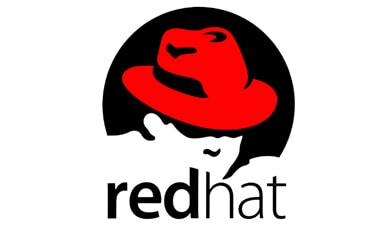
Access systems and get help
Log in to local and remote Linux systems, and investigate problem resolution methods provided through Red Hat Insights and support.
Navigate file systems
Copy, move, create, delete, and organize files while working from the bash shell.
Manage local users and groups
Create, manage, and delete local users and groups and administer local password policies.
Control access to files
Set Linux file system permissions on files and to interpret the security effects of different permission settings.
Manage SELinux security
Protect and manage the security of a server by using SELinux.
Tune system performance
Evaluate and control processes, set tuning parameters, and adjust process scheduling priorities on a Red Hat Enterprise Linux system.
Install and update software packages
Download, install, update, and manage software packages from Red Hat and yum package repositories.
Manage basic storage
Create and manage storage devices, partitions, file systems, and swap spaces from the command line.
Control services and the boot process
Control and monitor network services, system daemons, and the boot process using systemd.
Manage networking
Configure network interfaces and settings on Red Hat Enterprise Linux servers.
Analyze and store logs
Locate and accurately interpret logs of system events for troubleshooting purposes.
Implement advanced storage features
Create and manage logical volumes containing file systems and swap spaces from the command line, and configure advanced storage features with Stratis and VDO.
Schedule future tasks
Schedule tasks to automatically execute in the future.
Access network-attached storage
Access network-attached storage, using the NFS protocol.
Manage network security
Control network connections to services using the system firewall and SELinux rules.
Note: Course outline is subject to change with technology advances and as the nature of the underlying job evolves. For questions or confirmation on a specific objective or topic, please contact a training specialist online or at +1 866-626-2994.
This course is geared toward Windows system administrators, network administrators, and other system administrators who are interested in supplementing current skills or backstopping other team members, in addition to Linux system administrators who are responsible for these tasks:
- Configuring, installing, upgrading, and maintaining Linux systems using established standards and procedures
- Providing operational support
- Managing systems for monitoring system performance and availability
- Writing and deploying scripts for task automation and system administration
- You will be expected to already understand fundamental Linux computing concepts and be ready to practice the Red Hat Enterprise Linux methods for performing system administration tasks. Significant field experience working with Linux as a system administrator is recommended.
- If you do not have experience with fundamental Linux computer concepts, we advise you to start with the Red Hat System Administration I (RH124) course instead.
Impact on the organization
IT automation is key to managing large numbers of systems and applications efficiently and consistently at scale. This course develops the skills needed to efficiently operate and more easily scale the organization's dynamic IT infrastructure, accelerate application time to value, and rapidly adapt and implement needed innovation through DevOps practices.
Red Hat has created this course in a way intended to benefit our customers, but each company and infrastructure is unique, and actual results or benefits may vary.
Impact on the individual
As a result of attending this course, you should be able to use Ansible for the purpose of automation, configuration, and management. You should be able to demonstrate these skills:
- Install and configure Ansible or Red Hat Ansible Engine on a control node.
- Create and manage inventories of managed hosts, as well as prepare them for Ansible automation.
- Run individual ad hoc automation tasks from the command line.
- Write Ansible Playbooks to consistently automate multiple tasks and apply them to managed hosts.
- Parameterize playbooks using variables and facts, and protect sensitive data with Ansible Vault.
- Write and reuse existing Ansible roles to simplify playbook creation and reuse code.
- Automate common Red Hat Enterprise Linux system administration tasks using Ansible.
